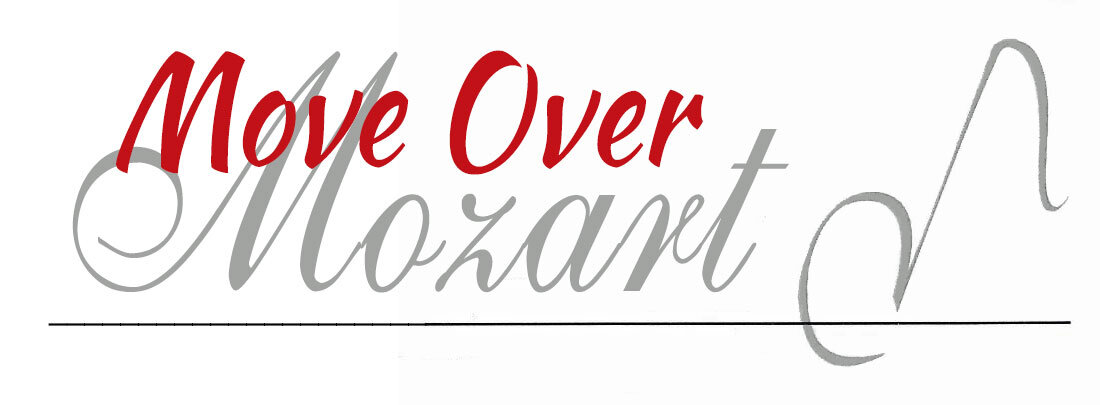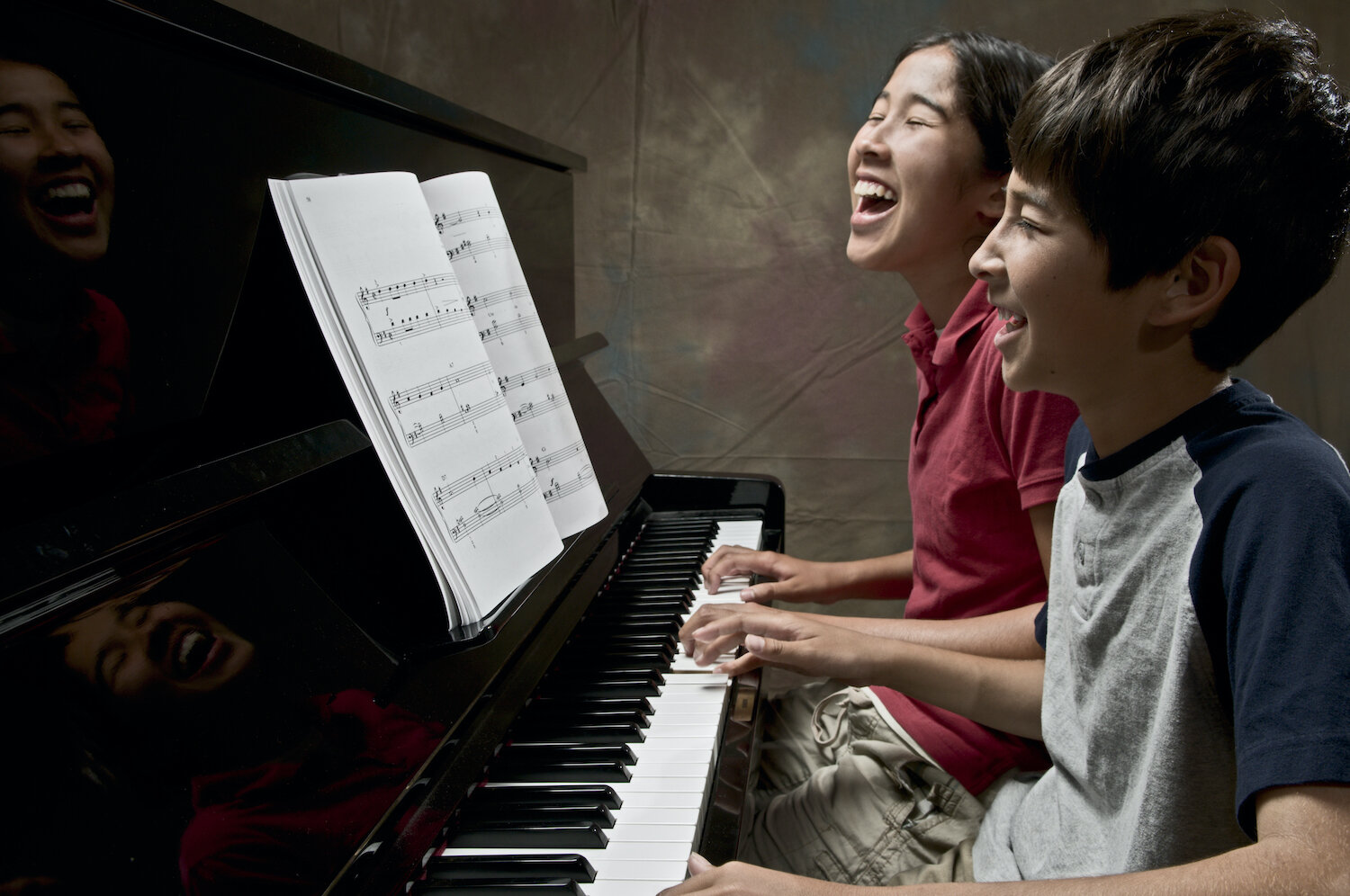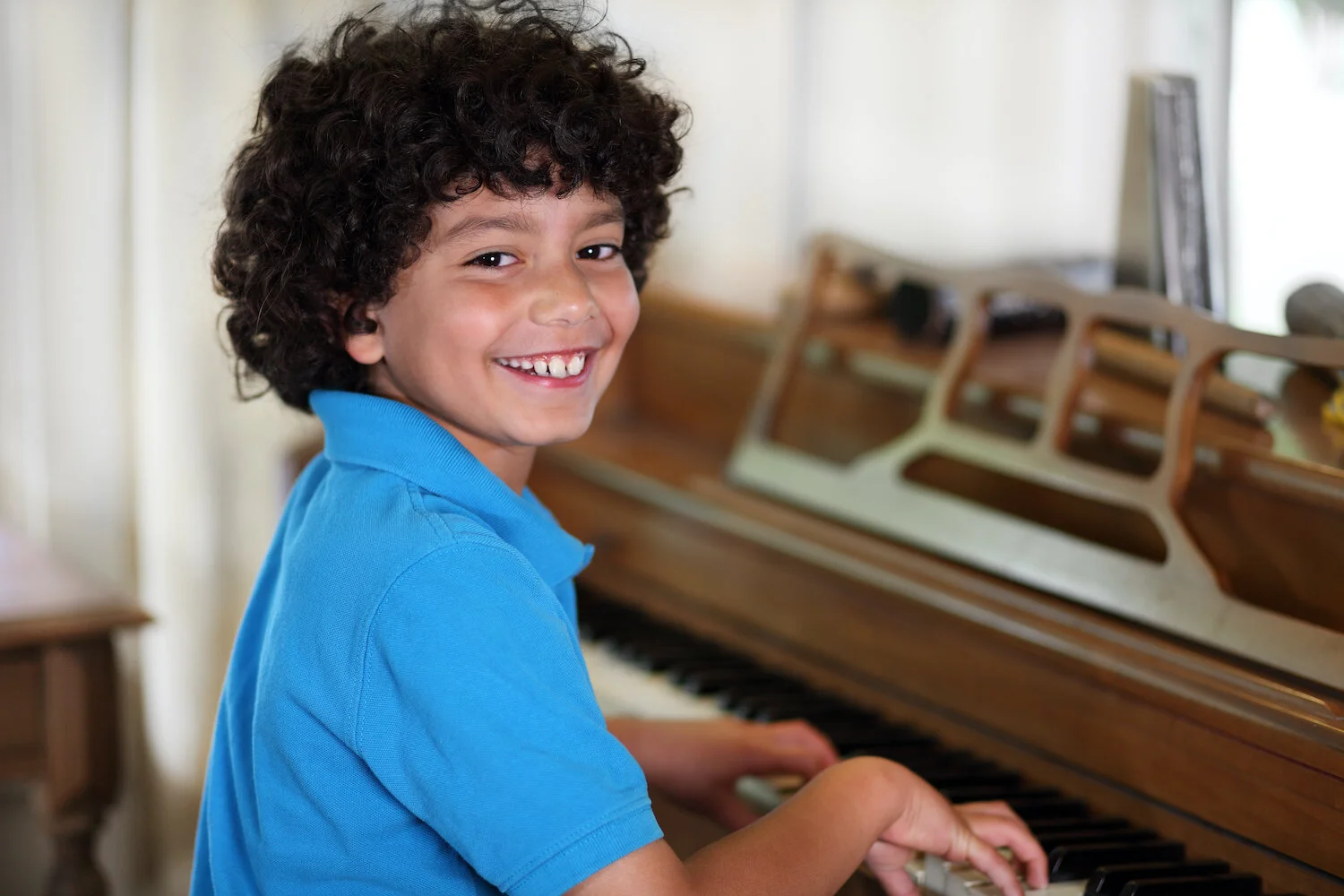
Crescendo Kids Classes
Our traditional piano classes that we have offered for over 25 years! Our small classes provides one-on-one teacher interaction as well as peer collaboration to enable each child to learn and grow musically.
Maximum of 6 children per class
New music each week
Games and interactive activities
Piano/keyboard at home not required (but is recommended)
No pre-set lessons – Classes designed specifically for your child
Offered at your school or local community center
North Kirkland Community Center
12421 103rd Avenue NE, Kirkland, Washington 98034
Classes offered on Tuesdays or Thursdays. Spring and Summer Registration begins March 19 for residents, March 21 for non-residents, 7:00 AM
Winter Session:
Tuesdays, January 16 - April 2. No class February 20.
Thursdays, January 18 - April 4. No class February 15.
Spring Session:
Tuesdays, April 16 - June 18.
Thursdays, April 18 - June 20.
Summer Session:
Tuesdays, June 25 - August 20.
Thursdays, June 27 - August 22.
Spartan Recreation Center
202 NE 185th St, Shoreline, Washington 98155
Classes offered on Mondays. Spring and Summer Registration begins March 26 for Shoreline Residents, March 28 for Lake Forest Park Residents, all others March 29. 8:00 AM.
Winter Session:
Mondays, January 22 - April 1. No Class February 19.
Spring Session:
Mondays, April 8 - June 17. No Class April 22 and May 27.
Summer Session:
Mondays, June 24 - August 19.
Questions and Answers
We do not have a piano or keyboard at home. Will my child fall behind?
Having a piano or keyboard at home is recommended but not required. What is unique about Crescendo Kids Classes is that children can participate and learn even without a piano at home. However, the more your child is able to practice at home, the more your child will get out of the class.
Each class is designed for the specific students in the class. Because of the nature of how we all learn differently, every child progresses at their own pace even if every child is practicing (or not practicing.) As a result, it doesn't really matter how quickly or how slowly your child progresses, they will do fine in the class.
Why do you only use one piano keyboard for six kids? Wouldn’t the students learn better if they each had their own piano keyboard?
It is not about the time at the keyboard, but about the quality while at the keyboard. Having the students one on one with the teacher allows each one to get the individualized attention needed to improve their own piano playing technique. Keep in mind, our classes are focused on very young children learning to play the piano. Because children's attention span is short and easily distracted, and their fine motor skills and their listening skills are not developed enough, each student having their own keyboard would result with a cacophony of sound not conducive to learning. Playing and listening at the same time is a skill that is learned and will be taught in this class, but it is not something that comes naturally to children.
Sometimes older children (ages 5 years and older) will also have a practice piano used in the classroom. This additional keyboard allows the students to immediately apply on their own what they have just learned with the teacher. It will also help to prepare them for additional practice at home.
How is a Crescendo Kids Class taught?
Our Crescendo Kids class consists of six students of similar age and ability in a 30-minute class. Our class structure has three main sections.
GROUP ACTIVITY. During this time, the class interacts as a group learning a concept from music theory.
INDIVIDUAL ACTIVITY. This is a time when the student will do something on their own, such as a worksheet or for older students, maybe play a theory game with their classmates that reinforces what they learned in the group activity.
ONE-ON-ONE TIME AT THE PIANO. Students have individual time at the piano with their teacher during the Individual Activity. For our primary and elementary aged students, the teacher time is followed by practice time at a second piano for the student to practice on their own what they just learned with the teacher.
What piano teaching methods do you use?
Our lessons use a variety of popular music teaching methods.
KODALY RHYTHM associating each rhythmic note with a syllable such as "ta" for quarter notes and "ti-ti" for eighth notes.
EAR-TRAINING, the ability to recognize what notes are doing from listening.
SOLFEGGIO, assigning syllables to each tone of the scale. (Do, re, mi, . . .) Although we will use the American system of a movable or tonic "do", we typically only teach these syllables in the key of C.
COLOR-CODING KEYS AND FINGERS, this very effective method is used for our pre-reading students.
HAL LEONARD PIANO LESSONS, this book is great for our younger or non-practicing beginners. It is mostly self-explanatory, making it easy for non-musical parents to follow along. It teaches note-reading through recognizing if notes are moving up or down and with steps (2nds) or skips (3rds).
ROBERT PACE LESSONS FOR PIANO is used for our older students or students with previous piano experience. It presents the note-reading process by recognizing patterns. It also has the student transposing songs into different keys from the beginning.
LEARNING IS MOTIVATED THROUGH FUN. It is our belief that a child is motivated to learn when they are having fun and enjoy what they are doing. Many musical concepts are taught through interactive games and activities.
How much practice is expected between lessons?
When a child first begins piano lessons, regular daily practice is important. However it is more about making it a DAILY routine than the amount of time or quality of practice. Set a piano time that works best with your child's daily schedule and will be fairly easy to keep consistent. This is your child's "piano time." They may play whatever they want for as little or long as they want. The goal is to make "piano time" a daily habit. What they play and for how long they play will come out of their own desire to make music.
What does “Piano Practice” look like for a pre-reading child?
This video shows what it looks like to help your pre-schooler play the piano.
For children ages 3 - 5 years old, of course regular practice is always recommended, but at this early age, traditional practice would be quite challenging if not impossible. Children love making music. At first it is just experiencing the different sounds that they can make out of the piano. They will also want to pretend they are a great performer or composer and imitate a wonderful song. As they play and listen, they will discover which notes sound good and which notes don’t sound nice. They also learn how to control the notes with their fingers (as compared to the whole hand.) Playing the song they learn during their lesson once or twice a day would be enough formal practicing at this age. Enjoying the piano and creating their own music is also important because it encourages their inner motivations of learning music.
Is this a piano class just for the kids, or are parents expected to stay and help their child?
This class is not designed for parents to participate. The material is suited for the age of your child to be able to do on their own. If a child is needing help, either the teacher will assist, or another student will be asked to help. This helps the student learn cooperation as well as independence. Also, the kids, especially at age 3, are learning how the class works and deciding if they trust the teacher. Some kids will want to make sure that mom is available, and will go back and forth from the table to their parent. For the first day, this is not a problem. After the first day, parents are asked to leave the room.
At the community centers, having parents stay in the classroom to watch can become a distraction for the students. For this reason, all parents are asked to wait outside the classroom during the lesson.
A piano class was missed. How do we make it up?
It is not possible to do a make up class. All of our classes are planned for the specific students enrolled in that class. Each group of students is different and unique, so joining a different class is not possible.
However, since each student progresses at their own pace, your child's teacher will help your child understand any missed concepts once they return. You can also submit recordings and contact your teacher through the practice app if you need additional assistance before their next lesson. Additionally, our piano parties are a great way to get additional “lessons” for free.
How much time does each child get on the piano keyboard?
The Crescendo Kids Classes are a group lesson for the whole half hour. During this time, the students will participate in at least three different activities: one on one time at the piano with the teacher, group time with the other students in the class, and individual time. All three activities are reinforcing their piano and music theory skills.
I want to learn to play the piano, too. May I sit and watch the class so I can learn along with my child?
Our classes are designed to be for the child only. It is preferred that parents wait outside the classroom. If you ever have questions about the curriculum or something specific about the class, you are welcome to send an email.
If you are interested in learning to play piano as well, we offer online private piano lessons that would be more appropriate to your age and abilities. It would be awesome for you to learn to play piano alongside your child!
Move Over Mozart offers small group piano classes for children, ages 3.5 to 12 years. Classes offered in Kirkland and Shoreline.
Want Something Different?
Online Piano Parties!
Our piano parties are for children ages 3 1/2 to 12 years old and for all music levels from the beginning, no experience to the advanced child prodigy. Our goal is to interact with other students interested in the piano and to have FUN!
Crescendo Kids Online
This is perfect for the beginning piano student, ages 3 1/2 to 12 years. Our goal is to introduce piano playing and basic music theory in a way that is fun and encouraging to every child.
Online Private Piano
Ready for traditional one-on-one private piano lessons? Each lesson is tailored to your or your child's specific needs. Our private instructors are skilled musicians with expertise in classical studies, jazz, composition, ear-training and music theory to name just a few.




